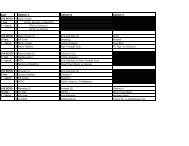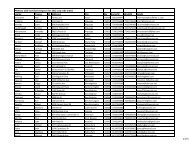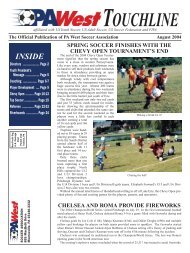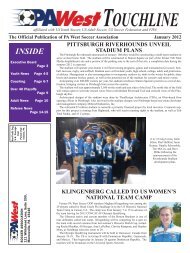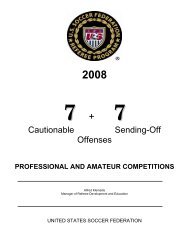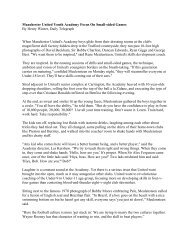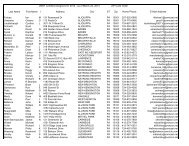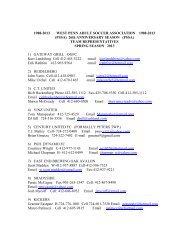LONG-TERM ATHLETE DEVELOPMENT: TRAINABILITY IN ...
LONG-TERM ATHLETE DEVELOPMENT: TRAINABILITY IN ...
LONG-TERM ATHLETE DEVELOPMENT: TRAINABILITY IN ...
You also want an ePaper? Increase the reach of your titles
YUMPU automatically turns print PDFs into web optimized ePapers that Google loves.
competition instead of on training during this important period in their athletic<br />
development.<br />
The “Learn to Train” and “Training to Train” stages are the most important phases of<br />
athletic preparation. During these stages ‘we make or break an athlete!’<br />
Stage 4 – The Training to Compete Stage TM<br />
AGE: Males 16 - 18 / Females 15 - 17 years<br />
Objectives: Optimize fitness preparation and sport, individual and position- specific skills<br />
as well as performance (optimize “engine”, skills and performance).<br />
This phase of development is introduced after the goals and objectives of the<br />
“Training to Train” stage have been achieved. The training to competition and<br />
competition-specific training ratio now changes to 50:50. Fifty percent of available<br />
time is devoted to the development of technical and tactical skills and fitness<br />
improvements, and fifty percent is devoted to competition and competition-specific<br />
training.<br />
During the “Training to Compete” phase, high intensity individual event and<br />
position-specific training is provided to athletes year-round. Athletes, who are now<br />
proficient at performing both basic and sport specific skills, learn to perform these<br />
skills under a variety of competitive conditions during training. Special emphasis is<br />
placed on optimum preparation by modelling training and competition. Fitness<br />
programs, recovery programs, psychological preparation and technical development<br />
are now individually tailored to a greater degree. This emphasis on individual preparation<br />
addresses each athlete’s individual strengths and weaknesses. Double and multiple<br />
periodization is the optimal framework of preparation.<br />
Stage 5 – The Training to Win Stage TM<br />
AGE: Males 18 years and older / Females 17 years and older<br />
Objectives: Maximize fitness preparation and sport, individual and position specific skills<br />
as well as performance (maximize “engine”, skills and performance)<br />
This is the final phase of athletic preparation. All of the athlete’s physical, technical,<br />
tactical, mental, personal and lifestyle capacities are now fully established and the focus<br />
of training has shifted to the maximization of performance. Athletes are trained to peak<br />
for major competitions. Training is characterized by high intensity and relatively high<br />
volume. Frequent “prophylactic” (preventative) breaks help to prevent physical and<br />
mental burnouts. Training to competition ratio in this phase is 25:75, with the<br />
competition percentage including competition-specific training activities.



